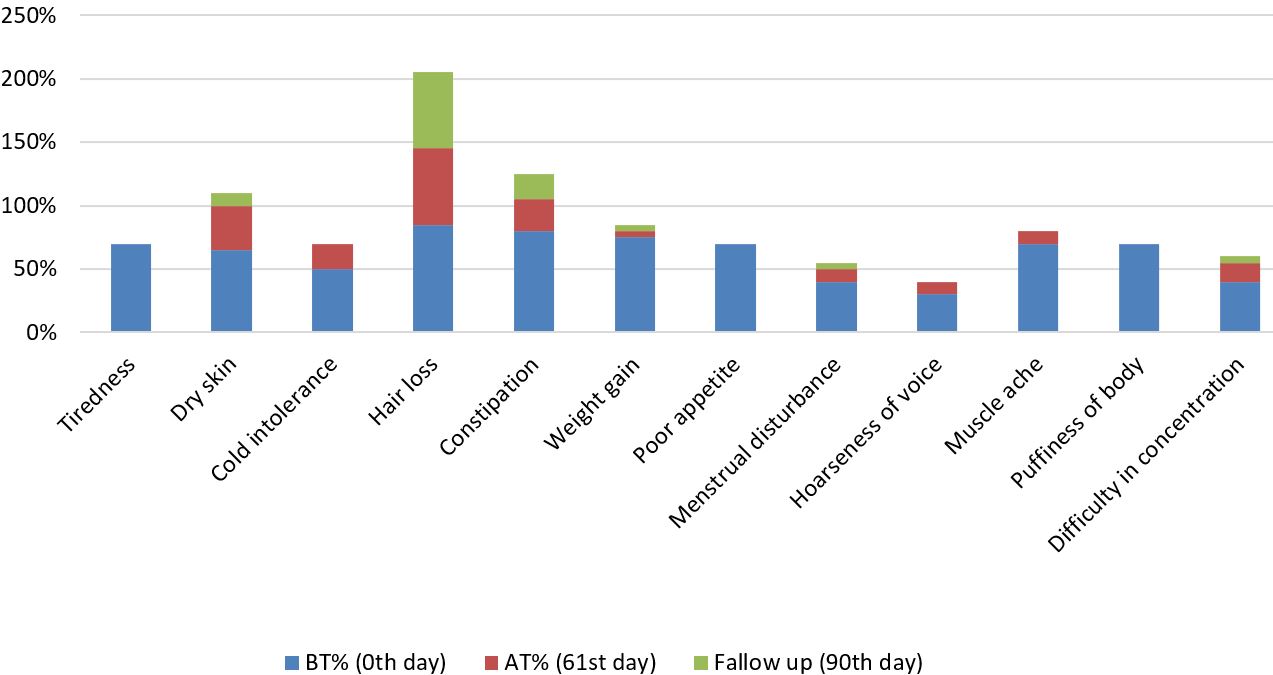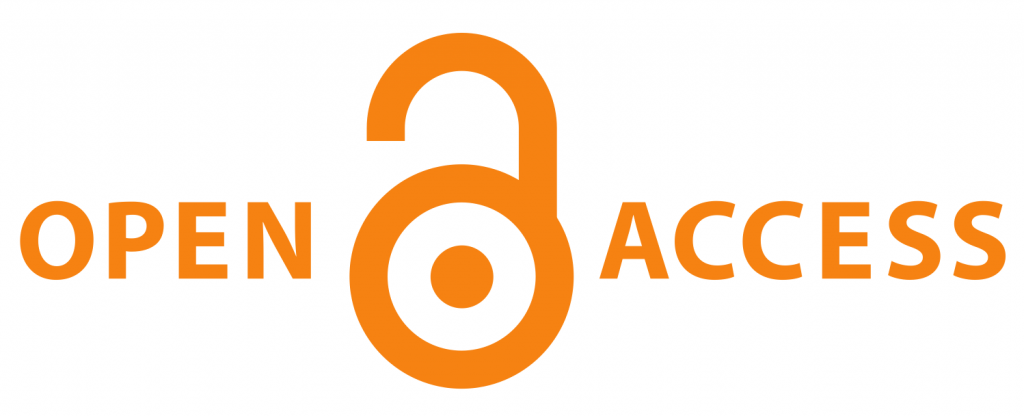A Clinical Trial to Evaluate the Combined Effect of Kulattha Yusha with Vidanga Churna in the Management of Hypothyroidism
DOI:
https://doi.org/10.21760/jaims.10.3.8Keywords:
Hypothyroidism, Kulattha Yusha, Pathya, Vidanga Churna, Zuwelski total scoreAbstract
Hypothyroidism is one of the most common thyroid disorders. An underactive thyroid gland characterizes it. The prevalence of hypothyroidism in India is around 11%, and Females suffer more than males, with a ratio of 6:1. The prevalence of clinical Hypothyroidism is about 4%. WHO initiated the project to fight thyroid hypofunction. From an Ayurvedic perspective, Hypothyroidism is characterized by Agnimandya (diminution of Agni), affecting both Jataragni (Digestive power) and Dhatwagni (metabolic factors located in Dhatu). It involves increased Kapha and Vata Doshas and decreased Pitta Dosha, often exacerbated by an unhealthy diet, sedentary lifestyle, and chronic stress. Treatment should focus on Agnideepana (enhancing metabolic fire), Kaphavatahara, and Pittakara principles. This clinical trial investigates the combined effect of Kulattha Yusha (Horse gram soup) and Vidanga Churna, which are recommended for their supportive properties used in managing Hypothyroidism. With this approach, the current study was designed to evaluate the combined effect of Kulattha Yusha (Horse gram soup) and Vidanga Churna in the management of hypothyroidism. Materials and Methods: The data were collected on the 0th day, 61st day, and 90th day after completing the Kulattha Yusha (Horse gram soup) with Vidanga Churna treatment. Results: The results indicate that the combined use of Kulattha Yusha (Horse gram soup) and Vidanga Churna showed clinically and statistically highly significant results in reducing hypothyroidism symptoms such as obesity, multiple joint pain and stiffness, heaviness of the body, loss of appetite, and the Zuwelski Total Scale Score for hypothyroidism, as well as a reduction in TSH levels, with a significant p-value of 0.000 Discussion: Kulatta Yusha, and Vidanga Churna known for its properties of Ushna, Tikshna, Kaphavatahara, Medhoghna, Agnideepana, and Vibandhahara, serves as an effective remedy for supporting thyroid function and restoring balance of Doshas.
Downloads
References
Cooper DS. Clinical practice: Subclinical hypothyroidism. N Engl J Med. 2001;345(4):260-5.
Kasper DL, Fauci AS, Hauser SL, Longo DL, Jameson JL, Loscalzo J, editors. Harrison's principles of internal medicine. 19th ed. New York: McGraw-Hill Education; 2015. p. 2251.
Mishra B. Bhava Prakashana Nighantu. Chunekhar KC, Pandey GC, editors. Harithakyadi Varga, 2nd chapter, verses 111-112. Varanasi: Chaukambha Bharati Academy; 2000. p. 52.
Kanzaria HR. Clinical study on hypothyroidism and its management with Vidanga Churna and Simhasana. [dissertation]. Jamnagar: Gujarat Ayurveda University; 2015.
Sharma PH. Vruddhajivakiya Tantra, Kashyapa Samhita. Varanasi: Chowkhmbha Sanskrit Sansthan; 2009. p. 246.
Sushruta. Sushruta Samhita: Nibandha Sangraha commentary of Dalhanacharya and Nyayachandrika Panjika on Nidanasthana. Gayadasacharya S, editor. Varanasi: Chaukhambha Surabharati Prakashana; 2022. p. 238.
Agnivesha. Charaka Samhita: Revised by Charaka and Dridhabala with the Ayurveda Dipika commentary of Chakrapanidatta. Trikamji Acharya Y, editor. 4th ed. Varanasi: Chaukhambha Surabharati Prakashana; 2021. Suthrasthana 1/89. p. 21.
Sastry JLN. Illustrated Dravyagunavijnana. Vol. II. Reprint 2017. Varanasi: Chaukhamba Orientalia; 2017. p. 452.
Sastry JLN. Illustrated Dravyagunavijnana. Vol. II. Reprint 2017. Varanasi: Chaukhamba Orientalia; 2017. p. 375.
Yogarathnakara. Prameha Chikitsa. Verse 10. Javaji T, editor. Hampi: The Academy of Sanskrit Research; 1907. p. 308.
Namboothiri DS. Chikitsa Manjari: Pramehachikitsa. Verse 9. Alappuzha: Vidyarambham Publishers; 2013. p. 225.
Kalra S, Khandelwal SK, Goyal A. Clinical scoring scale in thyroidology: A compendium. Indian J Endocrinol Metab. 2011;15(Suppl 2):S89-94.
Kanzaria H, Dave AR, Manani Y, Agravat P. A clinical study on hypothyroidism and its management with Vidanga. Eur J Biomed Pharm Sci. 2017;4(11):241-4.
Kumar LA. Assessment of proximate principle of Kulattha Yusha. [dissertation]. Hassan: Sri Dharamstala Manjunatheshwara College of Ayurveda and Hospital; 2017.
Kumar LA. Assessment of proximate principle of Kulattha Yusha. [dissertation]. Hassan: Sri Dharamstala Manjunatheshwara College of Ayurveda and Hospital; 2017.
Yadav A, Kumar A, Manu R. Preliminary standardization of Vidangadya Loha and Dhatri Loha: Potential drug for Pandu Roga. World J Pharm Med Res. 2019;5(6):363-7.















